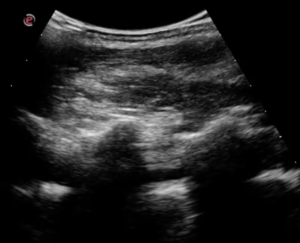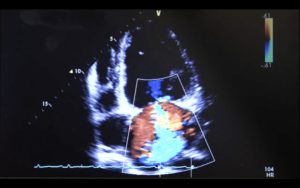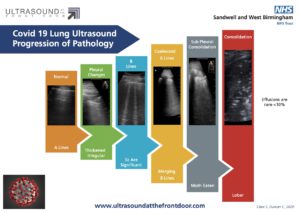A 35 year old gentleman with a background of learning disability presented to the Emergency Department (ED) with seizures on a background of two months of fevers, night sweats and being generally unwell. Prior to this he had presented to his General Practitioner with multiple collapsing episodes which had been attributed as being behavioural in nature. He was admitted to the Acute Medical Unit as a seizure ?cause. During initial work-up by the medical team a CT scan of his brain was requested and examination was documented as being normal. Up to this point in his admission process he had been reviewed by multiple clinicians all of whom had documented a ‘grossly normal examination but patient difficult to formally assess’. During senior review by the Acute Medical Consultant he was noted to have a loud murmur suggestive of mitral regurgitation. Bedside echocardiography was subsequently performed within the Acute Medical Unit demonstrating a vegetation on his anterior mitral valve leaflet (AMVL) with associated severe mitral regurgitation.
A4C demonstrates vegetation on AMVL, thin/wavy leaflet.
Zoomed image of MV on A4C view.
A4C demonstrates MR.
CT and subsequent MRI revealed multiple septic emboli to the brain as the likely trigger for his seizure activity. Despite an initial plan for valve replacement, difficulties with consent and plan for future management resulted in conservative management with six weeks of antibiotics. He made a good recovery.
Learning points:
- History is key. Always fully examine your patients and do not document assumptions based on incomplete assessments.This gentleman had “HS1+2+0” documented by two separate clinicians prior to noting the loud murmur.
- Never simply label a patient with learning disability as being ‘difficult’. Exclude other pathology.




